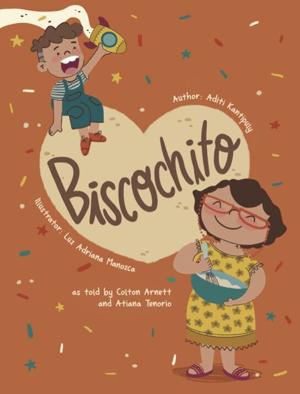Science
Author Aditi Kantipuly Uses Children’s Book to Explain Rare Disorder

Aditi Kantipuly, a physician in training at a Canadian university, has combined her passion for storytelling and science in a unique way. She has authored a children’s book titled Biscochito, designed to educate young readers about cerebral cavernous malformation (CCM), a rare genetic condition. This book aims to make complex medical information accessible and engaging for families.
Cerebral cavernous malformation is characterized by clusters of small blood vessels with abnormally thin walls that can lead to severe symptoms, including chronic headaches, seizures, and stroke-like episodes. Research indicates that CCM is more prevalent in New Mexico than in other regions of the United States, with studies linking a genetic mutation associated with one variant of the disorder to early Spanish settlers in the area. Although no cure exists, healthcare professionals, including researchers at the University of New Mexico Health Sciences Center, are actively seeking effective treatments and disseminating information to affected families.
Kantipuly’s approach to raising awareness about CCM is distinctive. She collaborated closely with a group of CCM patients from New Mexico to develop Biscochito. The story follows a grandmother with the condition as she shares her experiences while baking biscochitos, the state cookie of New Mexico, with her grandson. Each cookie serves as a vehicle for imparting knowledge about the condition.
“Children’s books serve as gateways to knowledge,” Kantipuly remarked, emphasizing her goal to present CCM in a way that is both informative and family-friendly. The book, published in 2023, seeks to demystify a rare genetic disorder that can be daunting for families to understand.
The project began when Kantipuly applied for funding through the Rare Disease Diversity Coalition, an organization committed to addressing the specific challenges faced by underserved populations dealing with rare diseases. This connection led her to the Alliance to Cure Cavernous Malformation and a collaborative project in New Mexico, which she described as a “perfect fit.”
Her inspiration blossomed further when she discovered the cultural significance of biscochitos in New Mexico. This connection allowed her to weave a cultural element into the narrative, making it resonate deeply with local readers. Kantipuly was adamant about involving individuals with CCM in the development of the book. She sought feedback on the narrative and character depictions from the support group, refining the story through their insights.
“The way that the narrative evolved was through conversations with the support group and myself,” she explained. “I proposed ideas, they provided feedback, and that’s how the book was born.”
To ensure the book reached its target audience, Kantipuly collaborated with the New Mexico Public Education Department. The department distributed copies of Biscochito to 50 elementary schools across the state. Anne Marlow-Geter, manager of the agency’s Safe and Healthy Schools Bureau, confirmed the initiative’s positive impact.
The book has become a valuable resource for families affected by CCM, including Sakura Tafoya, an 8-year-old patient from Santa Fe. Her father, Jared Tafoya, shared that they own two copies—one for home and another for the school library. Sakura had the opportunity to read the story to her second-grade class, showcasing its educational potential.
“The whole thing behind the book is that CCM is like a legacy,” Jared Tafoya noted. “It’s like a good recipe for biscochitos.” Kantipuly’s work not only informs but also builds connections, fostering understanding of a complex medical condition in a warm and inviting manner.
-

 Health4 days ago
Health4 days agoRare Brain Condition Discovered More Common in New Mexico
-

 Politics5 days ago
Politics5 days agoPrince Andrew Steps Back from Royal Duties Following Epstein Memoir
-

 Lifestyle5 days ago
Lifestyle5 days agoKent Hamilton Named Southeastern Farmer of the Year at Expo
-

 Health5 days ago
Health5 days agoRemembering Mary Ingleby: A Life of Love, Teaching, and Music
-

 Sports5 days ago
Sports5 days agoMLS Decision Day 2025: Playoff Spots on the Line as Teams Clash
-

 Science5 days ago
Science5 days agoIdaho State University Launches Haunted Science Laboratory on Oct. 25
-

 World5 days ago
World5 days agoYoung Driver Dies in Collision with Box Truck in El Cajon
-

 Business5 days ago
Business5 days agoFirst National Bank of Groton’s Quiet Period Ends October 21
-

 Entertainment5 days ago
Entertainment5 days agoTrump Commutes George Santos’ Sentence, Sparks Controversy
-

 Politics5 days ago
Politics5 days agoNavy Veteran Max Quattromani Launches Campaign for Assessor Seat
-

 Sports5 days ago
Sports5 days agoSaquon Barkley Reacts to James Franklin’s Dismissal from Penn State
-

 Health3 days ago
Health3 days agoScientists Warn: Human Brain Struggles to Function After Midnight









